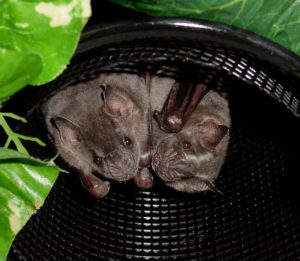By Amanda Lollar
What do bats smell like? We get this question a lot and it’s actually a fun question to answer. Bats do have an odor but they don’t stink; in fact, their scents range from pleasant to weird depending on the species and even their activities. Below is a personal description of the various “essences of bats” I have encountered over the past 25 years.
BRAZILIAN FREE-TAILED BATS
I first noticed the smell of Brazilian free-tails back in the early 90s when I detected a familiar odor coming from their tiny 2″ bodies.
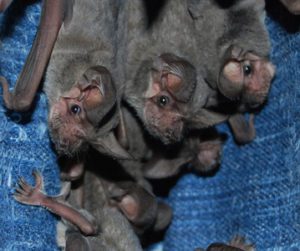
For the longest time I couldn’t put my finger on what they smelled like, I just knew the scent was pleasant. Then, one day, while walking down a grocery store aisle, I smelled it, the unmistakable smell of a Brazilian free-tailed bat – only it wasn’t a bat, it was corn tortillas! I picked up a package, held it under my nose and sniffed. There it was, the sweet smell of corn masa – so close to a free-tailed bat it was hard to tell the difference. Years later I shared this information with my then co-author and she shared it with a researcher who decided to investigate further. Using odor-tracking software, the researcher discovered that Brazilian free-tailed bats share the same chemical compound responsible for corn flour: 2-aminoacetophenone (read paper here). This compound is present in tortillas and many other foods. Interestingly, a primary portion of a free-tailed bat’s diet in the wild is the corn-borer moth. Another interesting note is that during release and right before take off, male Brazilian free-tailed bats emit a scent that smells like a bouquet of flowers.
HOARY BATS AND RED BATS
Hoary bats and red bats are both solitary species that roost in trees. Their unique fur coloring helps to camouflage them and keep them safe by making them appear as pine cones, dried leaves or even tree bark. These insect-eating bats are among the most beautiful in the US but have the unfortunate (albeit very faint) odor of fish combined with urine.
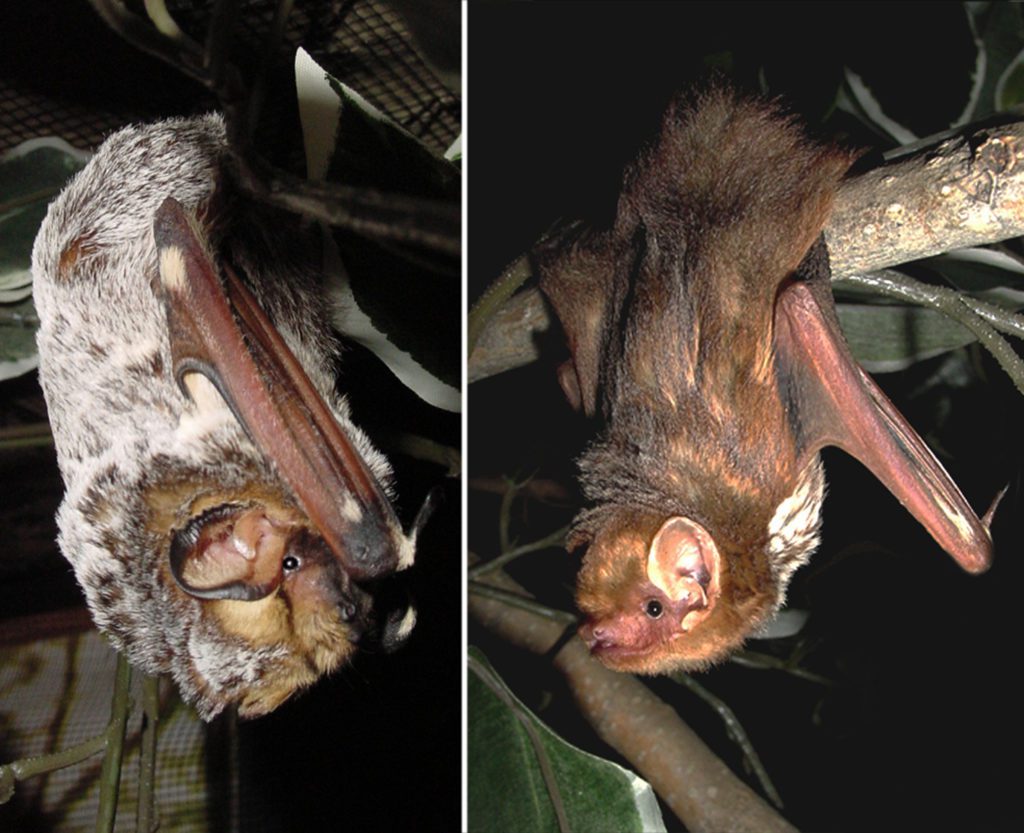
PALLID BATS
In my opinion big-eared pallid bats are the true fairies of the wood. They are exquisite little beings with endearing faces, yet these gentle bats are known for their ability to eat scorpions and centipedes while remaining oblivious to the stings. They don’t have much of an odor unless they are under stress. When that happens they smell very much like a skunk.
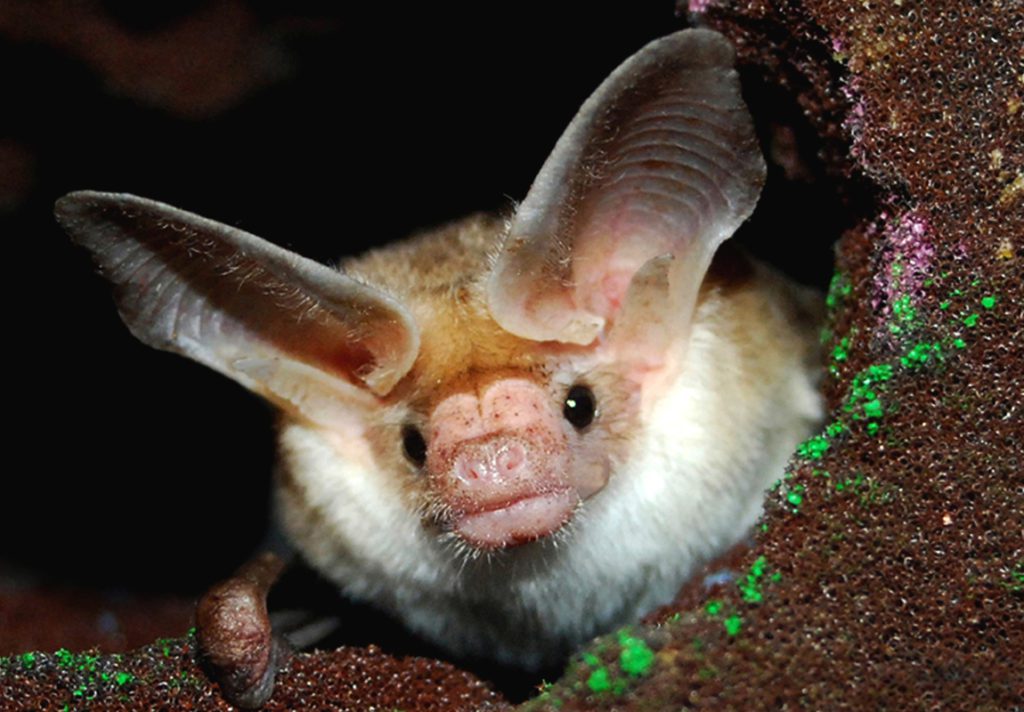
EVENING BATS
Evening bats resemble miniature 2″ grizzly bears. They eat cucumber beetles, Japanese beetles, carabidae beetles, June bugs, flying ants, spittle bugs, stinkbugs, and small moths, and they smell like burnt oranges.
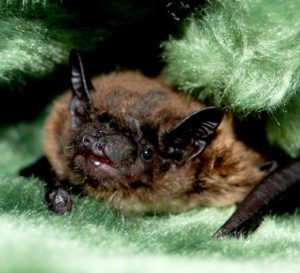
AFRICAN FRUIT BATS
Sometimes called straw-colored fruit bats, these cat-sized bats eat dates, baobab flowers, mangoes, pawpaws, avocados, figs, passion fruit and more, helping to spread the seeds of these plants over thousands of miles in Africa. African fruit bats don’t have much of an odor unless they are stressed. When that happens they smell like licorice combined with road tar.

EGYPTIAN FRUIT BATS
These squirrel-sized bats eat a variety of exotic fruits from tropical shrubs and trees in the wild. Wild dates and figs are among their favorite foods but they also enjoy plant nectar. These bats have the pleasant aroma of warm fruit jam.
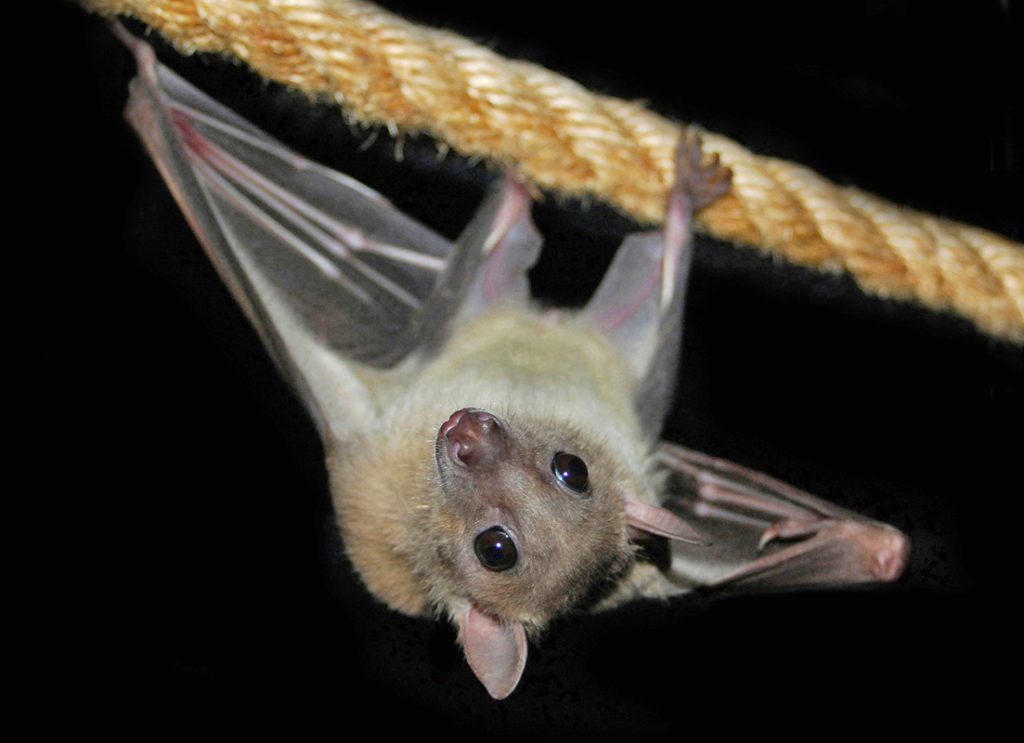
JAMAICAN FRUIT BATS
These hamster-sized bats eat fragrant fruits like figs, various leaves, flowers, pollen, nectar and even nuts in the wild. They also help to spread the seeds of the allspice tree which brings in millions of dollars a year to Jamaica’s economy. These bats don’t have much of a smell individually but when snuggled together they emit a fragrance comparable to perfumed soap.
